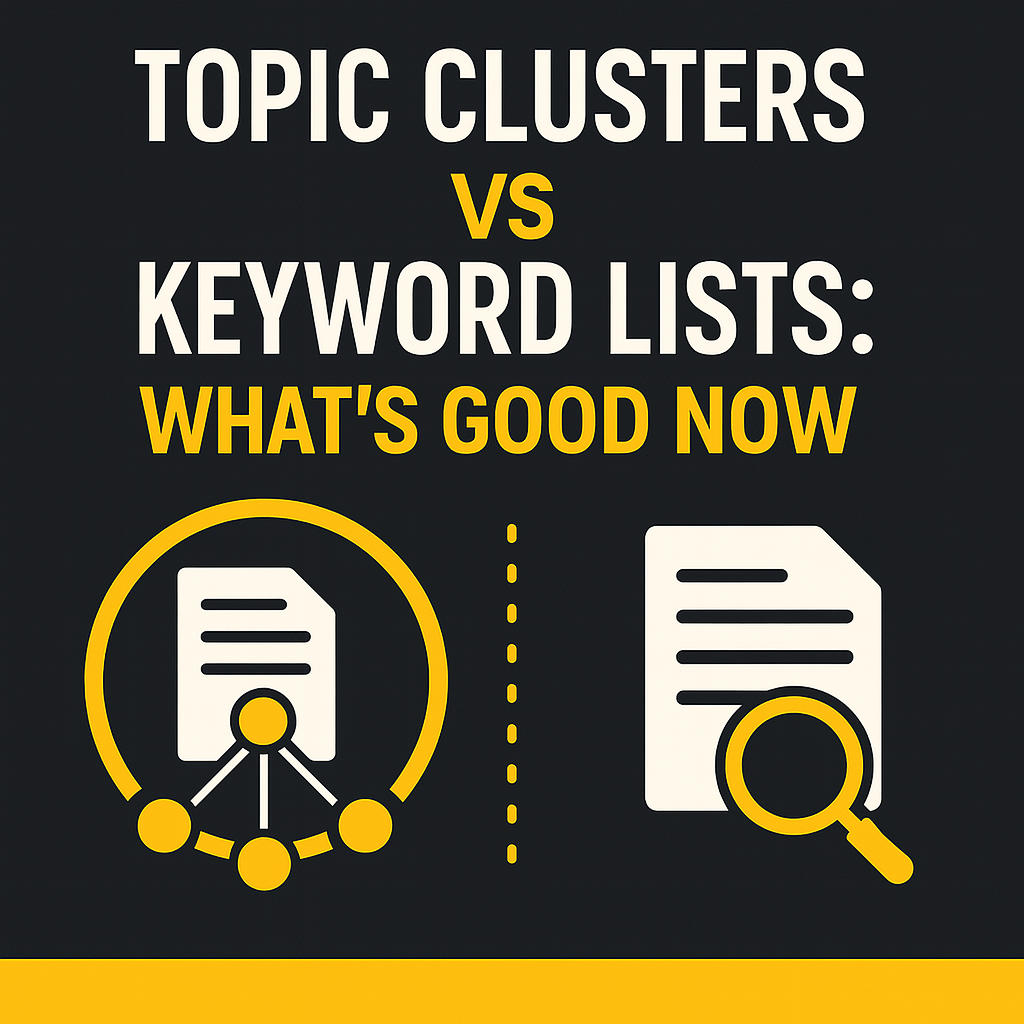The SEO landscape in 2025 is more dynamic and complex than ever before, driven by continuous advancements in search engine algorithms—especially Google’s increasing sophistication in understanding natural language and user intent. Topic Clusters vs Keyword Lists is not just another topic but a talk about evolution within. In this evolving environment, the long-standing debate between topic clusters and keyword lists continues, but with a notable shift in emphasis. While keyword lists remain foundational, topic clusters have emerged as the more powerful and future-proof strategy for sustainable organic visibility.
Search engines have evolved. So has user behavior. What worked in 2010 or even 2020 doesn’t quite cut it anymore. In 2025, SEO success is less about jamming keywords into content and more about building topical authority through structured content ecosystems.
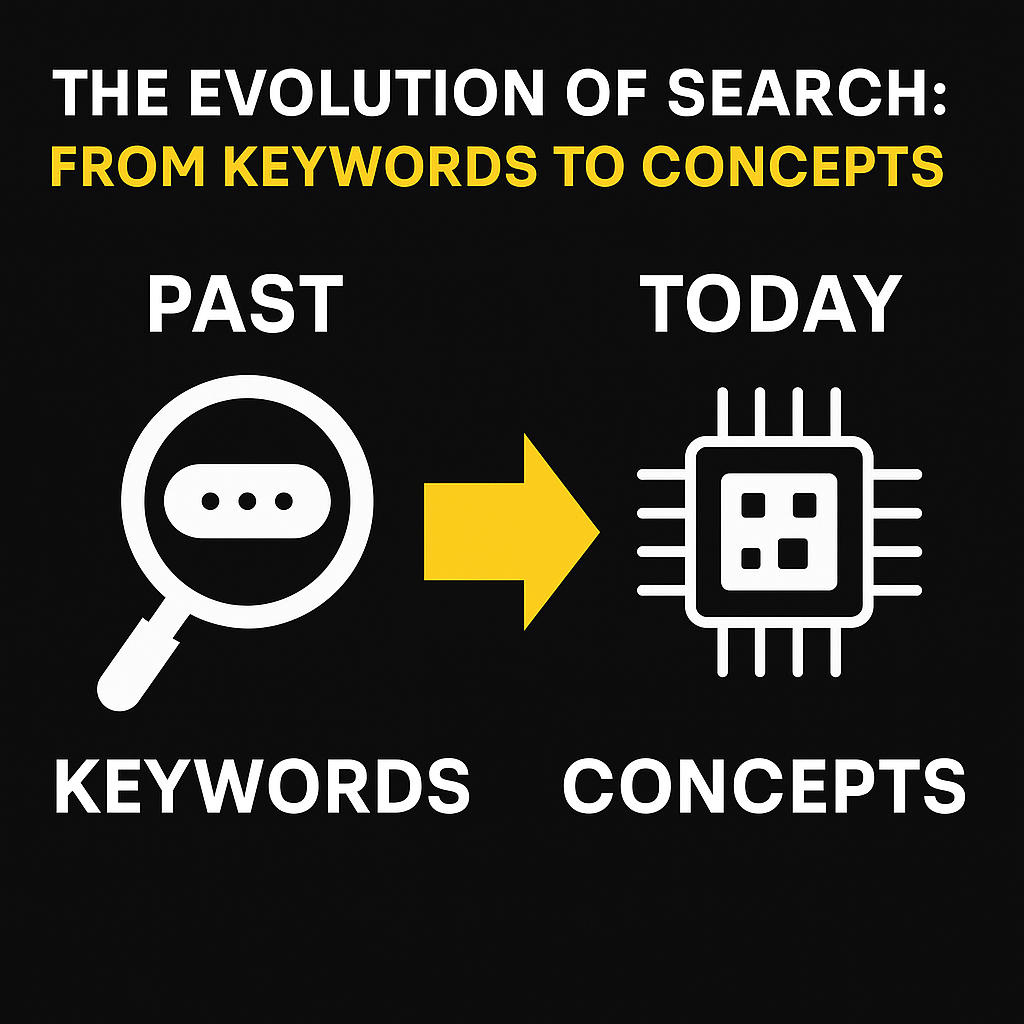
The Evolution of Search: From Keywords to Concepts
For years, SEO relied on keyword lists: identify high-volume terms, create content around them, and aim to rank. While effective then, this often led to repetitive, disconnected content focused more on algorithms than users.
Today, Google’s AI-driven algorithms—powered by RankBrain, BERT, and AI Overviews—grasp the context and intent behind queries. As a result, SEO now favors comprehensive, user-focused content over keyword density.
This is where topic clusters excel.
Keyword Lists: Still Foundational
In SEO, a keyword list is a collection of specific search terms people type into Google. Think of it like a list of ideas or phrases that your potential audience is already searching for. Traditionally, marketers would pick a keyword from the list — like “best project management software” — and write a blog post or landing page specifically around that phrase.
This approach still has value today. Why? Because it helps you understand:
- What people are looking for
- The language they use
- How often they search for it
However, here’s the catch: by focusing only on individual keywords, your content often ends up scattered, disconnected, and shallow. That’s where topic clusters step in.
Despite their limitations, keyword lists still matter. They serve as the foundation for topic research and planning.
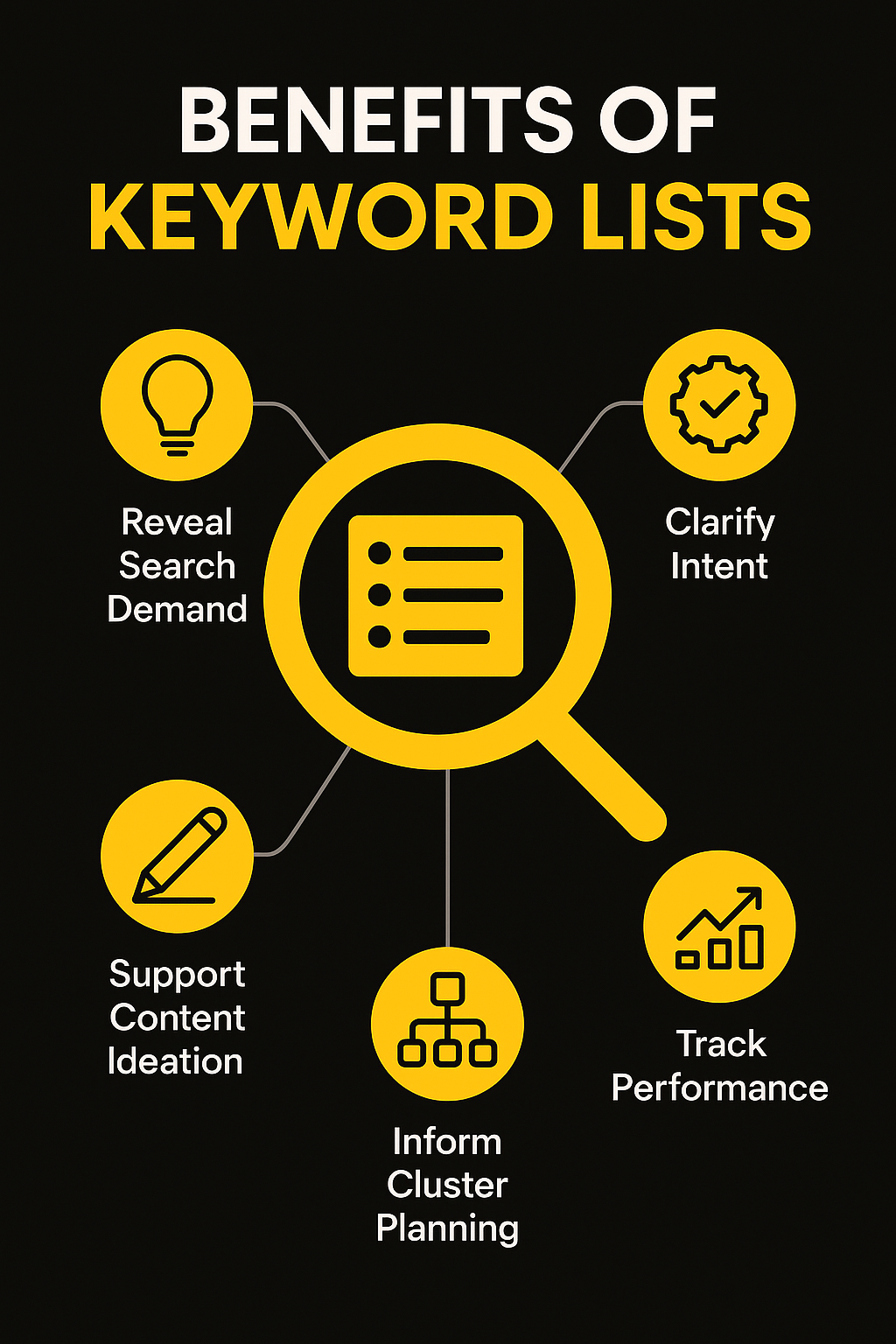
Key Benefits:
Reveal Search Demand: Show what people are looking for and how they phrase it.
First and foremost, keyword lists uncover what people are actively searching for. They show you the exact terms and questions your audience types into Google.More importantly, they also reveal how your audience phrases their searches — whether they’re using casual terms, industry jargon, or specific questions. This insight helps you align your content with real-world language, improving both relevance and ranking potential.
Clarify Intent: Help distinguish informational, navigational, and transactional searches.
Not every keyword signals the same type of intent.
Some users want information (e.g., “how to use email automation”), while others are ready to compare tools or even buy (“best email automation software for ecommerce”).
By analyzing keywords, you can understand why someone is searching — and create content that matches that purpose. This ensures you’re delivering the right type of content (blog, landing page, product page) to meet them at the right stage in their journey.
Support Content Ideation: Especially with long-tail terms.
Keyword lists aren’t just for rankings — they’re powerful brainstorming tools.
They often include long-tail keywords — longer, more specific phrases that reflect niche needs or detailed questions (like “how to schedule recurring emails in Mailchimp”). These are goldmines for content ideas because they allow you to write posts that speak directly to your target audience’s pain points or interests.
Track Performance: Useful for measuring which terms drive traffic.
Once your content is live, keyword data lets you track how it’s performing. You can see which terms are ranking well, which are driving the most traffic, and which need improvement.
This feedback loop is essential for SEO optimization. It helps you refine your content, update underperforming pages, and double down on topics that are working — all based on real numbers.
Inform Cluster Planning: Help identify pillar and subtopics.
Finally, keyword lists are the blueprint for building topic clusters.
When you group related keywords together, you start to see natural themes emerge — these can become your pillar topics. The supporting keywords? Those become your cluster pages.
Without keyword research, you’d be guessing. With it, you build a smart, structured content plan that’s both user- and search-friendly.
Why Keyword Lists Alone Fall Short
Keyword lists often lead to content that:
- Lacks Context: Doesn’t reflect expertise or depth.
- Has Weak Structure: Limited or no internal linking.
- Covers Topics Shallowly: Competes poorly with authoritative domains.
Smarter Usage Tips:
- Prioritize search intent over volume.
- Use semantic and related keywords.
- Conduct regular audits to stay relevant.
- Write with natural language, not keyword stuffing.
Topic Clusters: The Structure That Builds Authority
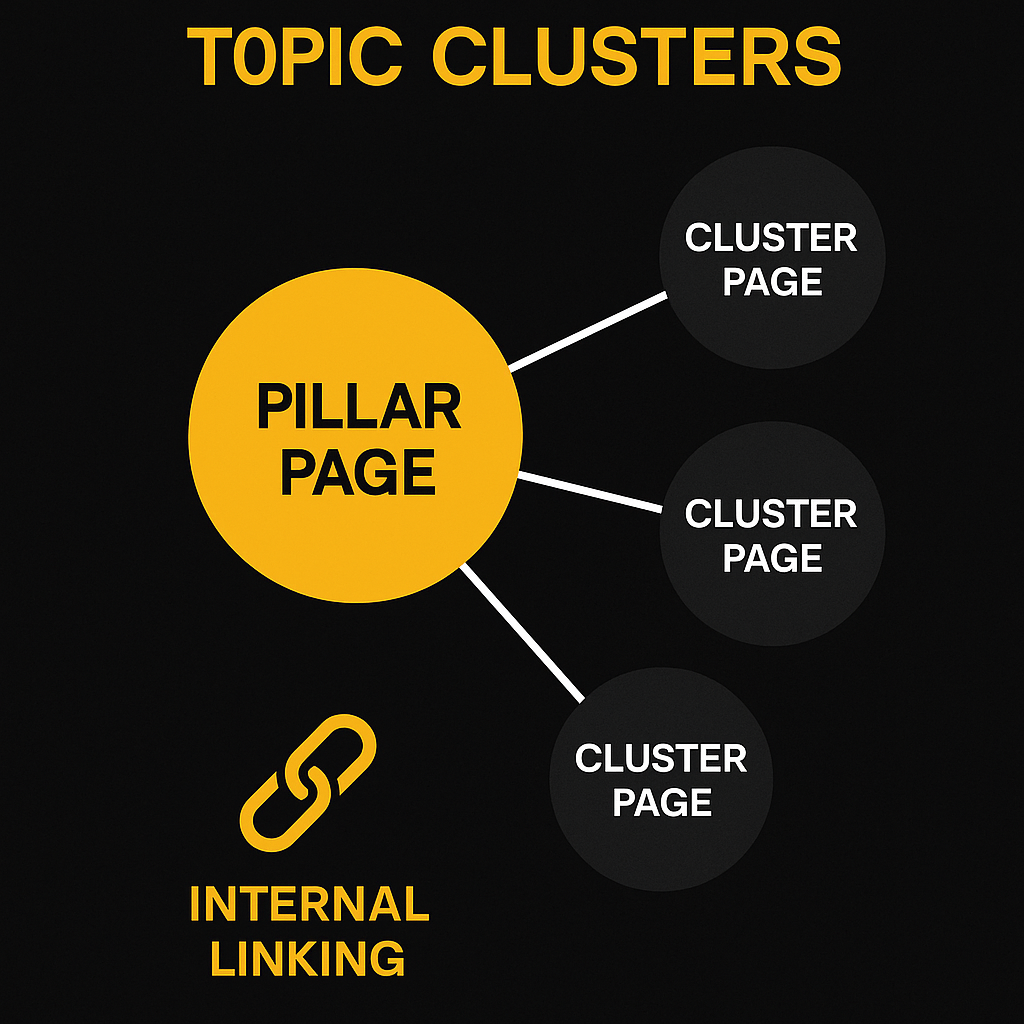
Topic clusters are a content strategy where multiple related articles (called cluster pages) link to and support a single comprehensive guide (the pillar page) on a broad topic. This structure helps search engines understand your site’s topical authority and improves internal linking for better SEO performance.
Instead of writing a separate article for every keyword, topic clusters help you organize your content around broader themes.
Here’s how it works:
- You create a pillar page — a comprehensive, in-depth guide on a big topic (e.g. “Project Management for Startups”).
- Then, you build cluster pages — shorter, focused articles that dive into specific subtopics (e.g. “Agile vs Waterfall Methodology”, “How to Choose a PM Tool”).
- All these cluster pages link back to the pillar, and the pillar links out to them — forming a strong internal network.
This not only makes your content easier to navigate but also tells Google, “Hey, we really know our stuff on this topic.” That’s called topical authority, and it’s a major SEO signal in 2025.
Example:
Pillar: Content Marketing Strategy for B2B SaaS
Clusters:
- SaaS Content Funnel: How to Map BOFU to Demos
- Content Marketing vs. Product-Led Growth: Which One Converts Better?
- Top 10 SaaS Content Marketing Mistakes That Kill Growth
- The Complete Guide to Content Marketing for SaaS Startups
Why Topic Clusters Win in 2025
Search engines now interpret meaning, not just match keywords. Topic clusters better align with how modern SEO works. Search engines have evolved far beyond simple keyword matching. With AI-powered algorithms like BERT and RankBrain, Google now interprets meaning, context, and intent rather than just scanning for individual keywords. This shift has made traditional keyword lists approaches far less effective on their own.
When we look at Topic Clusters vs Keyword Lists, the difference is clear:
Keyword listings focus on targeting single search terms, often leading to fragmented, standalone content.
Topic clusters, on the other hand, are designed to cover a topic holistically, connecting pillar pages and supporting content through strategic internal linking.
Key Advantages:
Build Topical Authority: Demonstrate depth and credibility (E-E-A-T).
Search engines no longer reward surface-level content. They prioritize depth, relevance, and expertise.
By using topic clusters, you show Google that your site covers a subject thoroughly — not just with one post, but with a full ecosystem of related content. This demonstrates E-E-A-T (Experience, Expertise, Authoritativeness, Trustworthiness), which is critical for ranking in competitive industries like SaaS, health, and finance.
Think of it as proving you’re not just part of the conversation — you’re leading it.
Improve UX: Help users navigate content logically.
Topic clusters help readers navigate your site more easily.
When your content is logically organized — from broad overviews (pillar pages) to detailed deep-dives (cluster pages) — visitors can quickly find what they’re looking for. This results in:
- Longer time on site
- Lower bounce rates
- More engagement
Strengthen Internal Linking: Boost rankings through authority flow.
By design, topic clusters rely on strategic internal links.
Each cluster page links back to the main pillar page and (ideally) to related cluster pages. This interlinking does two things:
- Helps Google crawl your site more effectively
- Spreads link equity (SEO value) across your content
In turn, your newer or lower-authority pages can rank faster and higher just by being connected to well-performing content.
Target Long-Tail Keywords: Capture a broader range of queries.
Pillar pages typically focus on high-volume, broad keywords.
Cluster pages, on the other hand, allow you to target specific, lower-competition long-tail keywords — which often reflect stronger intent and lead to higher conversions. For example:
- Pillar: “Content Marketing Strategy”
- Cluster: “How to Measure Content ROI for B2B SaaS”
This dual-layer approach maximizes your visibility across the funnel.
Support AI Search: Ideal for AI-generated summaries.
With the rise of generative search and AI-powered summaries, Google favors content that is well-organized and information-rich.
Because topic clusters naturally group related information, they make it easier for AI systems to understand context and extract accurate summaries. AI has changed the dynamics of how SEO works, SEO vs AI has been the topic for a while now.
In short, clusters help your content be found, featured, and trusted in the AI-powered SERPs of 2025.
Reduce Cannibalization: Eliminate internal keyword competition.
When you publish multiple articles targeting similar keywords without a clear structure, your own content ends up competing with itself — that’s called cannibalization.
Topic clusters prevent this by:
- Defining the role of each page (pillar vs. cluster)
- Assigning specific keyword targets
- Reducing redundancy and confusion
This leads to cleaner architecture, better rankings, and more intentional traffic.
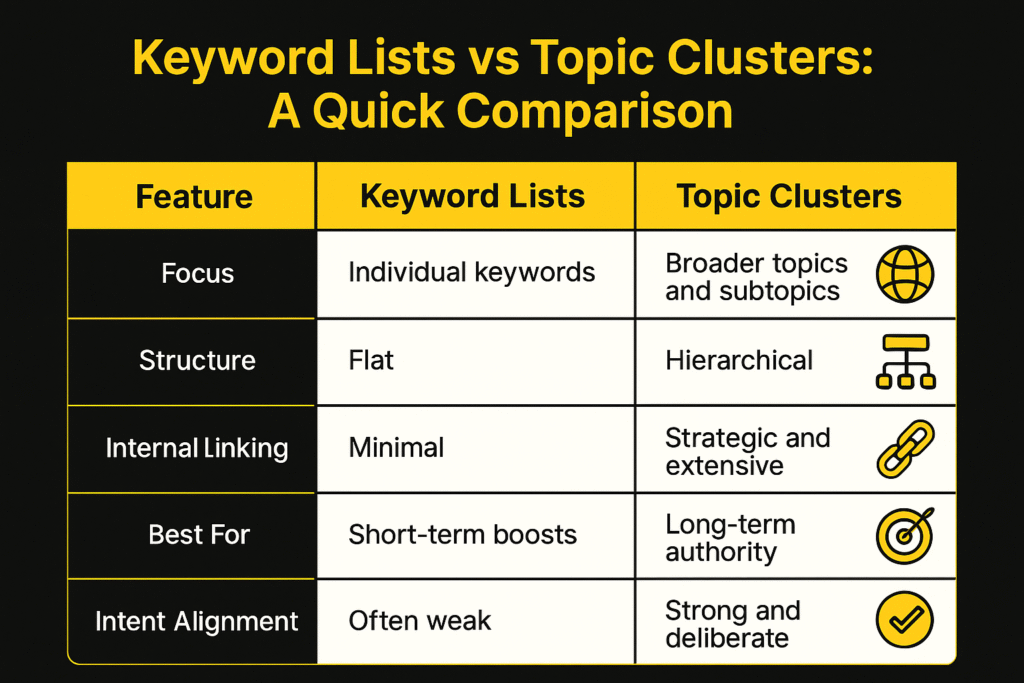
How to Shift : Topic Clusters vs Keyword Lists
Step-by-Step Guide:
Identify Core Topics: Choose 4–5 broad themes your audience cares about.
Start by zooming out.
Think about the 4–5 big themes your ideal customers care about — these should directly relate to your product, service, or area of expertise. For example, if you’re a CRM company, core topics might include customer retention, sales pipeline, email automation, or lead scoring. These will become your pillar topics — the central hubs around which your content will revolve.
Research by Topic: Group keywords into themes and subtopics.
Now that you have your main themes, it’s time to dig into the details.
Use tools like Ahrefs, SEMrush, or Google Search Console to group keywords under each topic. Look for variations, questions, comparisons, and long-tail queries. For example, under “email automation,” you might find:
- “best email automation tools for startups”
- “how to send recurring emails in Mailchimp”
- “email drip campaign examples”
These keywords become your cluster page ideas, tightly aligned under each core theme.
Create Pillar Content: 1,500–3,000-word comprehensive pages.
Your pillar page should be a comprehensive, well-researched, 1,500–3,000 word guide that covers the topic broadly but doesn’t go too deep on every sub-point. Instead, it should link out to deeper, more focused cluster pages.
For example:
Pillar page: The Ultimate Guide to Email Automation
Links to cluster pages like:
- Best Email Tools for Startups
- Setting Up a Drip Campaign
- Email Automation Mistakes to Avoid
Build Cluster Pages: Address each subtopic thoroughly.
Now it’s time to fill in the details.
Cluster pages are your supporting content pieces — each one zooms in on a specific subtopic or user question. These are usually easier to write (800–1,200 words) and they should directly support your pillar page, both in content and with internal links.
Tip: Each cluster page should link back to the pillar, and ideally to other related cluster pages when relevant.
Link Strategically: Ensure every page links back to the pillar.
This part ties everything together.
Make sure there’s a strong internal linking structure between your pillar and cluster pages. Not only does this help users navigate your site more intuitively, but it also helps Google understand your content hierarchy — which boosts your topical authority.
Think of your internal links as the threads in a spider web. The stronger and more intentional they are, the more powerful your content ecosystem becomes.
Additional Tips:
- Optimize for mobile and fast loading.
- Use headings, visuals, and bullets for readability.
- Track rankings and adjust as needed.
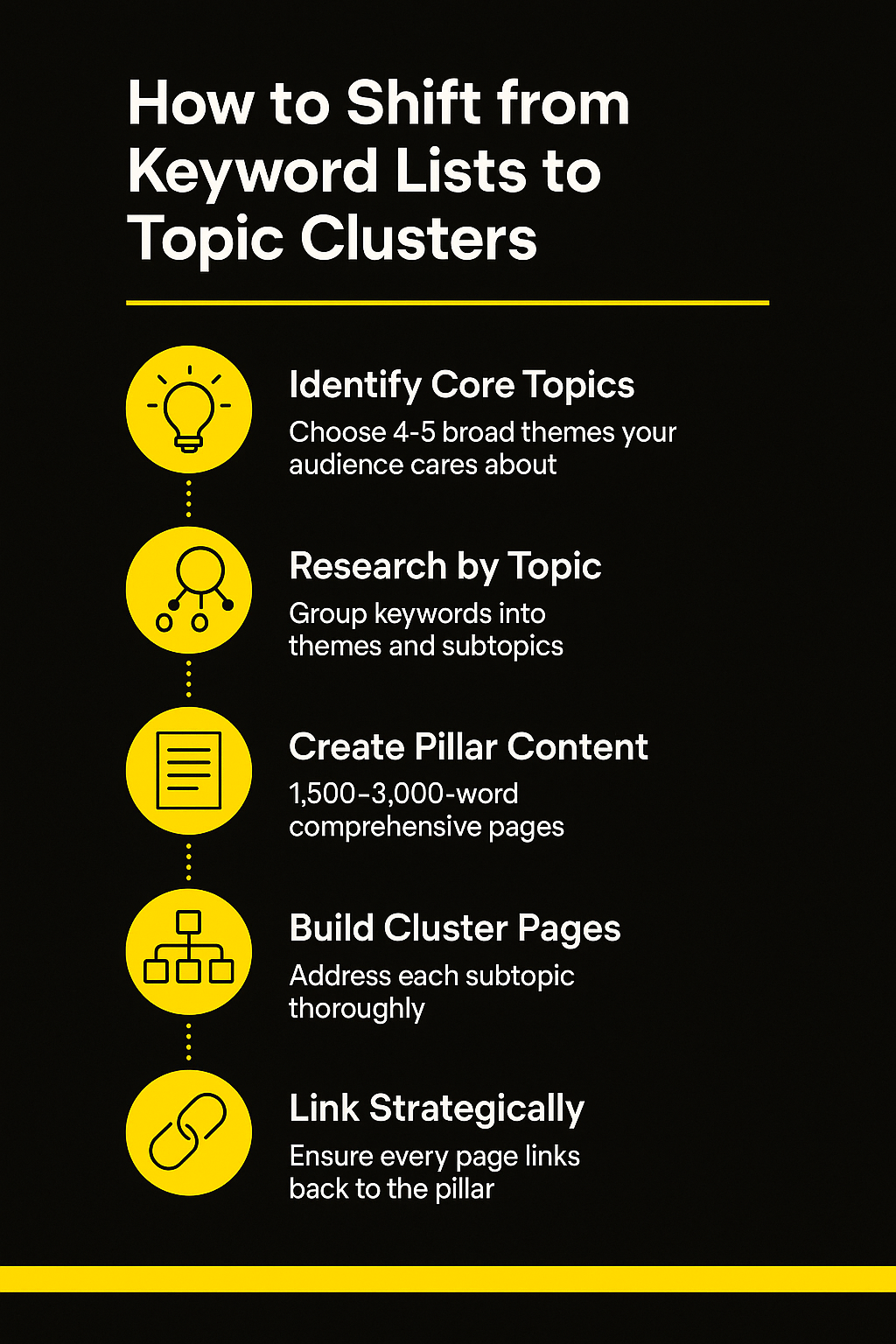
Putting It Together: Topic Clusters vs Keyword Lists
Now, you might wonder — Topic Clusters vs Keyword lists, Who wins?
Not at all.
In fact, the best SEO strategies use keyword research to build topic clusters. You start with a list of keywords, group them under common themes, and then create structured content that’s easy to navigate, valuable to the user, and optimized for search.
Keyword Lists + Topic Clusters: The Perfect Pair

In 2025, the smartest content strategies don’t choose between keyword lists and topic clusters — they combine them. Why? Because each one plays a unique, complementary role in building a sustainable SEO presence.
- Use Keywords to Reveal Demand
Your keyword list is your market insight tool. It shows you what your audience is searching for, what language they use, and where the demand is highest. It helps you tap into real-time user intent — whether that’s informational, commercial, or transactional.
Think of this as your raw material: the bricks you’ll use to build your content strategy.
- Use Clusters to Structure and Deliver Value
Once you know what people are searching for, you need to organize that information into something meaningful. That’s where topic clusters come in.
They take the keyword research and turn it into a clear, navigable framework. Instead of creating scattered, standalone content, you build an interconnected system of pillar pages and cluster pages — giving users context and search engines clarity.
Clusters help you go beyond ranking and into authority building.
- Use Data to Refine and Expand
SEO isn’t a one-and-done game. With both keyword tracking and cluster performance data, you can continuously:
- Identify content gaps
- Spot trending queries
- Refresh underperforming pages
- Expand your cluster with new, relevant content
This iterative approach ensures your site evolves with search trends and user behavior.

Brick by Brick, Blueprint by Blueprint : Topic Clusters vs Keyword Lists
So, what’s the bottom line?
Keyword lists are the bricks. Topic clusters are the blueprint. Together, they build something sustainable.
One without the other leads to gaps:
- Just keywords? You get scattered, siloed content.
- Just clusters without intent? You may miss what people actually search for.
But together, they form a strategy that’s:
- Scalable — Easily expand your content without losing structure or focus.
- Search-friendly — Aligned with how Google understands and ranks content in 2025.
- User-focused — Designed to guide visitors through topics logically and intuitively.
- Algorithm-proof — Built to withstand future search updates and AI-driven changes.
And that’s exactly what SEO in 2025 demands.
Keyword lists are the bricks. Topic clusters are the blueprint. Together, they build something sustainable.
Final Thoughts: Topic Clusters vs Keyword Lists
The SEO landscape in 2025 demands more than a list of keywords and a blog calendar. It demands strategy, structure, and subject authority. While keyword lists are still the foundation — helping you understand what your audience is searching for — they’re no longer enough on their own.
Topic clusters are how you turn that foundation into a long-lasting SEO framework.
By organizing content around central themes and using internal linking to tie everything together, topic clusters do three things remarkably well:
- Signal expertise to search engines
- Improve user experience with logical pathways
- Future-proof your content in the age of semantic and AI-powered search
That’s not to say keyword lists are obsolete. Far from it. But they now play a supporting role in a much larger, more strategic system. In essence:
Keyword lists tell you what to write. Topic clusters tell you how to write it — and how to connect it.
If your goal is to build authority, drive consistent organic traffic, and create content that resonates with both users and algorithms, topic clusters are the clear winner.
So if you’re still publishing content post-by-post, keyword-by-keyword — it’s time to pivot.
Start thinking in clusters. Structure your expertise. And let your content ecosystem do the heavy lifting. Turn keywords into conversions — schedule your strategy session today.

